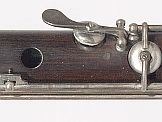
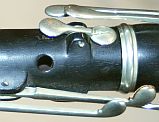
Open G# key on a Boehm flute (DCM0890) — closed G# key on a simple system flute by Liebel
The G# key on Boehm's 1832 model flute was open-standing, whereas the simple system flute had a closed-standing G# key.


(To be precise, an 'open G# key' is actually a G key. It is called into use to play the note G, not the note G#. This misnaming is unfortunate, but nothing can be done about it now.)
A flute with an open G# key requires a significant change in fingering from one with a closed G# key. Some players of the ordinary (simple system) flute resisted this change because they were not convinced that any advantages of the Boehm flute with an open G# key were worth the cost and trouble of learning to use it, when they already had acquired expertise with the closed G# key. The ealiest attempt to replace the open G# on the Boehm flute with a type of closed G# key, and thereby to restore the old fingerings, was an effort by Louis Dorus and Louis Lot. The device they invented, the Dorus G# key, may be found on conical Boehm flutes by A. Buffet by 1838, and was adopted quickly by Godfroy and Rudall & Rose in the 1840's. The addition of a closed G# key as on the old flute to the Boehm flute may be considered a retrograde step, but it made the instrument acceptable to many players and hastened its general adoption.
While the modern closed G# key with a 'duplicate G# hole' (see below) has superceded it, the Dorus G# key served well for over two decades on conical and cylindrical Boehm flutes.
The Dorus G# key (or G# key assembly) consists of two keys that rotate or pivot on the same shaft, each with a its own spring. One is a complete key with cup and touch and the other is a ring key. The diagram below is from R. S. Rockstro's Treatise on the Flute (1890).
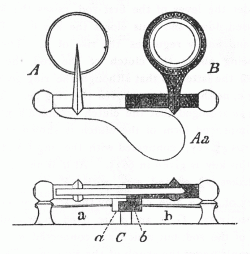
The ring key is over the A hole (for LH3) and the key cup is over the G# hole; the touch is for LH4. The ring key was not present on Boehm's 1832 model flute (the A hole had no key at all) and the key over the G# hole was open-standing.
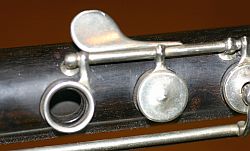
If the ring key (including its spring) of the Dorus assembly is disregarded for the moment, the other part (in orange on the right below) is a normal closed-standing G# key. It covers the G# hole and rotates on the shaft; the touch must be depressed to uncover the hole. There is a needle spring (not seen in this diagram) that keeps it closed.
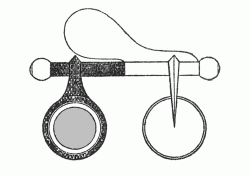
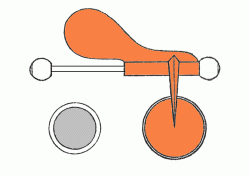
If the G# hole is routinely left closed, the 'open key system' is compromised. When the note A is played, the tone would be muffled (veiled) and the note would be too flat were the G# hole covered. One solution might be to keep LH4 on the touch a large part of the time (this is exactly what is done with RH4 on the closed-standing D# key), but that seems awkward for the left hand; Dorus wanted to restore the G#-fingering of the old flute with no complications. Another solution (this is mostly a joke) is to hire an assistant to depress the G# key touch (raising the pad) for you, until he or she notices you have lowered LH3, in which case he or she must get out of the way quickly.
Dorus' solution was to make the orange G# key rotate and uncover the G# hole by a stronger spring (the 'assistant' in our joke above) that also raised the ring key. (This stronger spring is the one under the ring key, on the right below.) Thus the touch of the G# key is normally down and its pad is up. Depressing the ring key pushes the strong spring (the 'assistant') out of the way and allows the orange G# key to descend and act as a normal closed G# key.

To repeat: The orange key is only allowed to act as a normal closed key when the ring key is depressed; otherwise it is forced to stand open. Because of the strong spring, it takes a little extra effort for LH3 to press this ring key than for most other keys. But LH3 is a strong finger and it is not so noticable. Once the ring key is pressed, only light pressure with LH4 is required to play G#; alternating Ab (G#) and G is almost effortless.
The closed G# key that supplanted the Dorus G# key c.1860 requires that an additional G# hole be made under the flute. This G# hole is kept closed with an ordinary closed-standing G# key. The other G# hole on top of the flute remains open to ensure the venting required by the open key system. The cups for the A and the G# hole on top of the flute are rigidly connected and are both closed by LH3. This arrangement is conceptually and mechanically simpler. While some players objected to the presence of the extra hole in the tube, the extra reliabily of this later arrangement ensured its dominance.
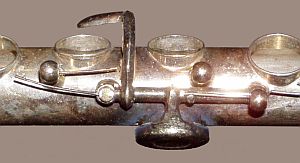
The photo above shows a section of an old and tarnished modern Boehm flute body from which all keys have been removed except for its closed G# key.
